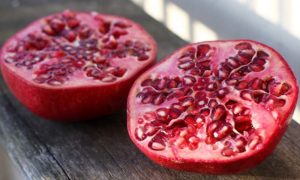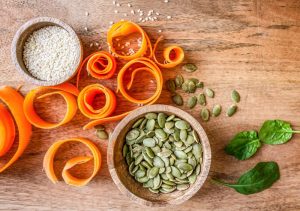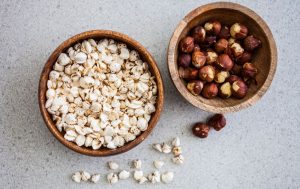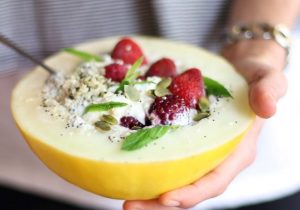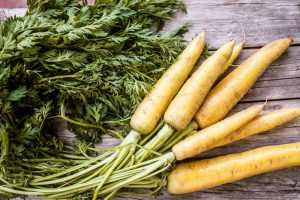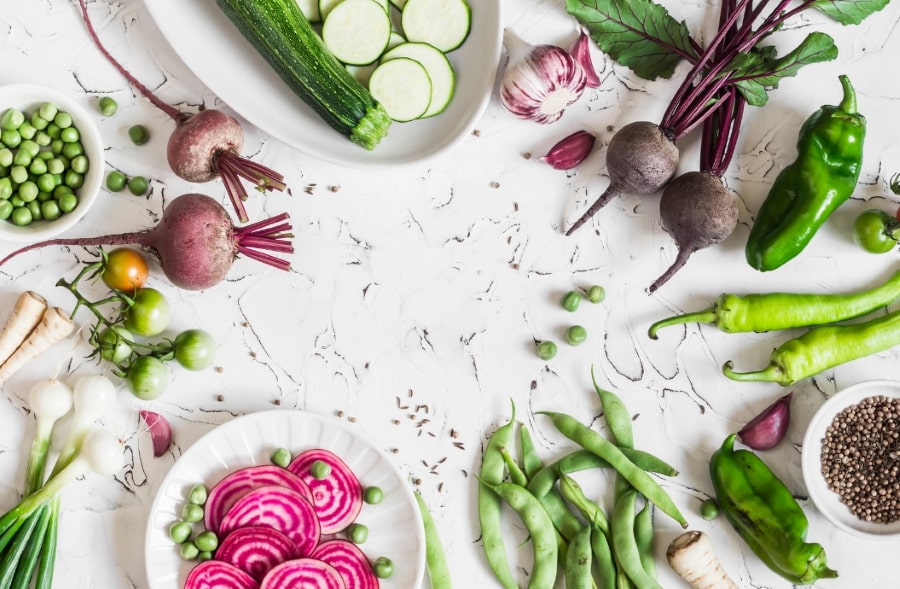

Join our usefulletter and get 10% off your first order + exclusive recipes, offers and BTS
Plant-Based Lifestyles Series: The Rise, The Diversity and The Impact
Have You Heard of a Plant-based Lifestyle?
A healthy plant-based lifestyle relies on whole or minimally processed vegetables, fruits, nuts, seeds, legumes and wholegrains — anything and everything that is a plant or that grows on a plant. It is often synonymous with a wholefoods lifestyle or also known as a wholefoods plant-based lifestyle.
Since 2017 increasing numbers of people have been choosing a plant-based lifestyle, with current demand greater than ever. This increased demand for plant-based meals and desserts is being met predominantly with easy to swap products, such as our desserts that still taste indulgent, or the large range of alternative milk and plant-based proteins now available, to name a few.
It is interesting to note that not everyone choosing plant-based meals is following an exclusively plant-based lifestyle at all times. Our direct experience supports research showing us that Australians are making more educated decisions about which foods they are buying and looking carefully at the ingredients in these foods.¹ This is wonderful news and we say out with the ingredients we cannot pronounce or recognise!
Australia has the second-largest plant-based community in the world, according to Google Trends Research conducted by culinary website Chef’s Pencil.
The top reasons Australians make plant-based choices include:
- Health benefits of eating less processed food
- Health benefits of eating more vegetables, fruits, whole foods, nuts and seeds
- Less impact on the environment when choosing local vegetables and fruits
- Animal welfare concerns
Types of Plant-Based Lifestyles
Vegan Lifestyle
The vegan plant-based lifestyle excludes all animal products and by-products. This includes the most obvious animal products such as meat, eggs and dairy products, as well as leather, honey and gelatine. Vegan plant-based lifestyles usually rely heavily on whole grains and legumes, a lot of fruits and vegetables, and nuts and seeds. Those adopting this lifestyle will choose alternative milk and butter, as well as egg and protein replacements when cooking or baking.
Vegetarian Lifestyle
The vegetarian plant-based lifestyle excludes animal products such as meat and seafood but includes dairy products, eggs and/or honey. Vegetarian plant-based lifestyles also rely a lot on whole grains and legumes, fruits and vegetables, and nuts and seeds.
Flexitarian Lifestyle
An increasing number of people are following what is called a ‘casual vegetarian’ or flexitarian lifestyle. While they are not strictly following a plant-based diet all the time, they focus on making healthy, plant-based swaps, while still allowing small amounts of animal products.
Regardless of where we are in the above categories or if we’re somewhere in between, we will all have the same five new best friends (a.k.a. food categories we will be eating lots from):
- Vegetables and tubers: any above the ground, under the ground, multicoloured, monochrome, with seeds or without, it does not matter. Let’s have fun cooking and make it a rainbow party if we can.
- Fruits: let’s take our pick and enjoy them all.
- Wholefoods: brown rice, quinoa, millet, oats, barley, to name a few.
- Legumes: any beans, chickpeas, lentils in all shapes and colours.
- Nuts and seeds: an almond here and cashew there, a pumpkin and sunflower seeds, we should have fun tasting our way through a variety of them. We can use them as salad toppers, snacks or desserts.
Examples of easy, healthy swaps we love for maximum flavour:
Is Plant-based Better for Us?
Eating mostly plant-based foods means eating mostly vegetables, fruits, whole grains, legumes, nuts and seeds, and less processed foods. This means more vitamins and minerals, more fibre, more antioxidants and phytonutrients. So yes! For those without intolerances or allergies to the foods listed above, it is better for us and not a fad. Long-standing communities around the world, with the oldest, healthy living populations have done it for a long long time.
Eating more plant-based meals is not even about following an exclusive vegan or vegetarian lifestyle to reap the benefits. It simply means that the more whole food plant-based meals we eat, the greater the quantity and variety of nutrients we ingest so that our bodies have the opportunity to function at their best.
Cooking tip for eating more plant foods: If you include animal protein in your diet, have you considered using it as a condiment rather than the main focus of the meal?
The potential health benefits of eating more plant foods include:
- Improved energy and vitality
- Better sleep and overall better mood
- Better digestion (and poop!)
- Supporting our immune system to do its job
- Lowered risks for various lifestyle diseases such as heart attacks or diabetes
Eating more plants is a powerful way to love our bodies, help our health, and reduce the risks of getting sick. If we start with a small change today, tomorrow we’ll be glad we did.
An excellent first step to include more plants in your diet are smoothies! They make a delicious, nutritious and quick option for breakfast or afternoon snack. Try this Mango, Peach and Matcha Smoothie for a healthy, energizing pick me up.
What Are Good and Bad Plant-based Choices?
We don’t believe food should be labelled as either good or bad. Fats and oils help absorb certain nutrients and vitamins into our bodies, carbohydrates fuel our bodies and our brains, sugar is not a devil in disguise and we will not be struck down if we eat a doughnut.
While we cannot compare a cup of spinach to a bag of lollies and label one as good and the other as bad, there are more nutritious choices we can make, while staying away from labels and diets.
We like these plant-based guiding principles:
- Choosing whole foods (such as brown rice) over processed foods (white rice) whenever possible for more fibre and nutrients.
- Choosing whole fruits or smoothies over fruit juices whenever possible for more fibre and vitamins. Also, chewing is an important part of digestion! So chew, chew and chew some more.
- Choosing fresh vegetables and fruits over canned plant foods for fewer additives, less sodium and less added sugar.
- Cooking meals at home as much as we can, time and circumstances permitting. Or choosing less processed foods and less fried foods if we do takeaway often.
We don’t need to turn vegan or vegetarian overnight nor need we follow all the above principles from the beginning and all the time to reap the benefits of eating more plant foods. We don’t need to carefully plan every meal, count calories or beat ourselves up if we cannot or don’t want to give up white rice (Hello, Sushi!).
We should simply focus on increasing our wholefoods intake where and when we can, making a few smart, gradual substitutions and additions here and there while continuing to make our favourite foods in the pursuit of happiness. Yes, we can all continue to eat pasta! Which reminds me: have you considered making your sauce from scratch and sneaking in a grated carrot and a grated zucchini? Trust me, it’s both delicious and nutritious.
Is Plant-based Better for the Planet?
Plant crops such as legumes, grains and vegetables have a significantly smaller environmental footprint compared to industrial livestock farming, known as one of the most polluting industries at a global level, affecting our waters, soils and natural resources.
A few quick facts:
- Animal-based food production has accelerated during the past 100 years in response to growing demand²
- Global meat consumption doubled between 1980 and 2002²
- Global meat consumption is expected to double again before 2050²
- Some studies estimate that 18% of global greenhouse gas emissions are caused by the livestock industry² ³, while other studies state that the number is as high as 51%.4 Even the smaller 18% estimate makes the livestock industry the second-largest polluter after the electricity industry.5
- The livestock industry uses 1/3 of global land and 2/3 of all agricultural land. Instead of feeding the poor, the hungry and the starving, global crops are used to feed the animals that developed nations consume in excess. This is also the main cause of clearing forests and turning them into pastures.³
- Clearing forests often leads to plant, insect and animal extinctions.
- Livestock farms are the greatest cause of water pollution.3 and water wastage.²
A plant-based lifestyle requires only about a third of the land needed to support a meat and dairy diet. And while not everyone can or should become vegan or vegetarian, we could easily say that the size of the meat on our plate determines the rate at which we are damaging our planet. A big steak? A bigger environmental footprint and quicker environmental decline. Eating more plants is simply better for us and our planet.
On a final note, some food for thought. Can you imagine a world in which no one ever dies of hunger and starvation? Amazingly, this is very achievable and it only takes us consuming half the amount of meat and redistributing half the crops that would be used as animal feed towards starving populations.
Subscribe to our newsletter here to receive the next article in the plant-based series, all about balanced plant-based nutrition.
Disclaimer: Please note that no content on this website should be used as a substitute for direct medical advice from your GP, nutritionist or dietitian.
References:
1 Reetica R., Aila K., Jocelyn E., Hazel M-W., Carolyn L., Robyn M.,Australian Consumer Awareness of Health Benefits Associated With Vegetable Consumption, 2017
2 Steinfeld H., Gerber P., Wassenaar T., Castel V., Rosales M., De Haan C. Livestock’s Long Shadow. FAO, 2006.
3 Ilea R.C. Intensive Livestock Farming: Global Trends, Increased Environmental Concerns, and Ethical Solutions. J. Agric. Environ. Ethics. 2009.
4 Goodland R., Anhang J. Livestock and Climate Change: What If the Key Actors in Climate Change Are… Cows, Pigs, and Chickens? World Watch, 2009.
5 Russell S. World Resources Institute; 2014. Everything You Need to Know About Agricultural Emissions.
